Products
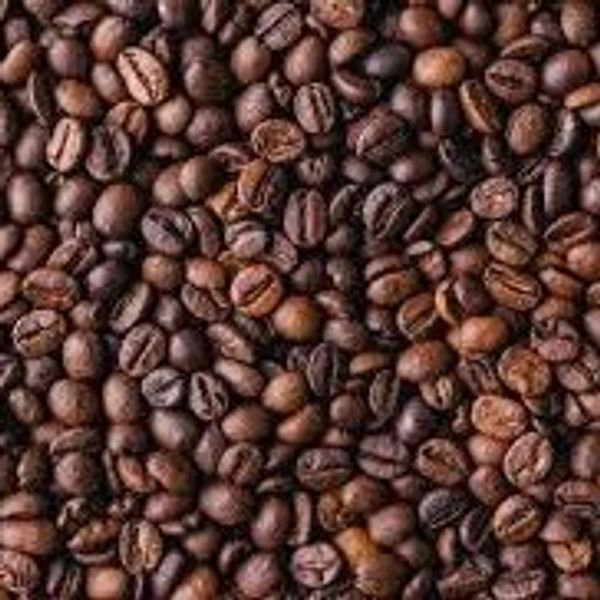
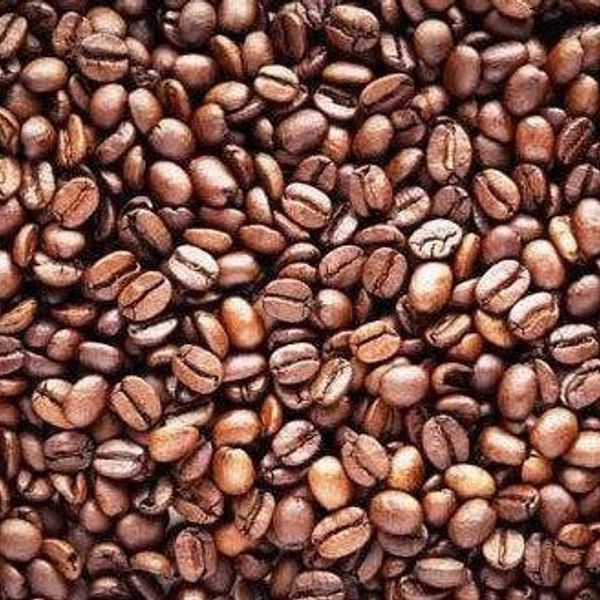
Coffee Beans (Arabica & Robusta)
Kerala coffee beans are primarily Arabica and Robusta varieties, known for their high quality, rich flavour, and organic options, available in green (unroasted) and roasted forms. Key regions for production include Wayanad and Munnar, offering strong, aromatic, and often organic beans.
Key Characteristics of Kerala Coffee Beans:
Varieties:
Kerala produces both Arabica and Robusta beans.
Arabica:
Valued for its mild, aromatic, and high-quality profile, which fetches a premium price in international markets.
Robusta:
Characterized by its strong flavour and high caffeine content, often used in blends and to make instant coffee.
Organic & Natural:
Many Kerala coffee beans are cultivated and processed organically, with minimal or no chemical fertilizers, appealing to a growing global demand for organic products.
Flavor & Aroma:
Beans are often described as having a pure taste, strong aroma, and a rich flavour profile.
Cultivation:
Grown at various elevations, with Robusta beans from Wayanad specifically noted as being grown at significant altitudes (700 to 2100 meters).
Key Characteristics of Kerala Coffee Beans:
Varieties:
Kerala produces both Arabica and Robusta beans.
Arabica:
Valued for its mild, aromatic, and high-quality profile, which fetches a premium price in international markets.
Robusta:
Characterized by its strong flavour and high caffeine content, often used in blends and to make instant coffee.
Organic & Natural:
Many Kerala coffee beans are cultivated and processed organically, with minimal or no chemical fertilizers, appealing to a growing global demand for organic products.
Flavor & Aroma:
Beans are often described as having a pure taste, strong aroma, and a rich flavour profile.
Cultivation:
Grown at various elevations, with Robusta beans from Wayanad specifically noted as being grown at significant altitudes (700 to 2100 meters).
Dark Brown
아라비카
Organic
As per customer's request
Origin
인도
+ 2

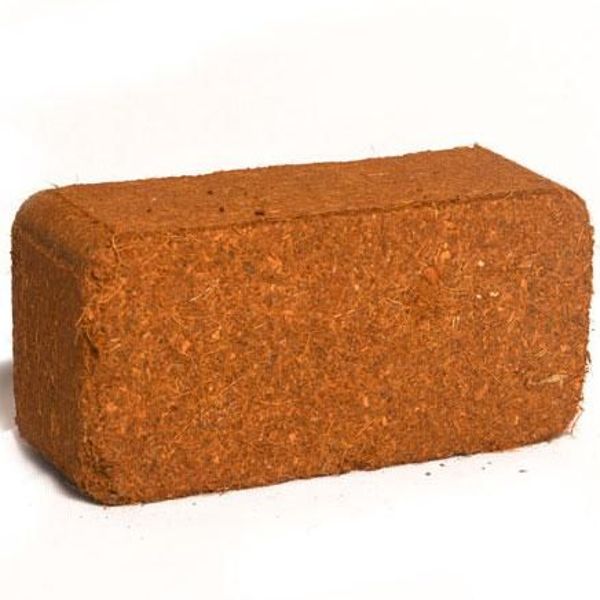
Coco Peat (Coir Pith)
Coco peat, also known as coir pith, is a natural, lightweight, and spongy growing medium derived from the fibrous husk of coconuts. It is valued globally as a sustainable and eco-friendly alternative to peat moss, as it is a renewable resource created from a byproduct of the coconut industry. The material is thoroughly washed, dried, screened, and compressed for cost-effective export. It is 100% organic and eco friendly, free from soil borne pathogen and weed.
Key features:
High water retention: Can absorb and hold water up to eight times its weight, reducing the frequency of irrigation.
Excellent aeration: Maintains a loose, airy texture that prevents soil compaction and promotes healthier, more robust root development.
pH neutrality: The pH level is typically neutral (5.5–6.8), making it suitable for a wide variety of plants and balancing acidic or alkaline soil.
Eco-friendly: A sustainable, biodegradable, and renewable resource that helps reduce agricultural waste.
Weed and pathogen-free: The processing and heat treatment ensure the product is free from weeds, harmful pathogens, and soil-borne diseases.
Product varieties:
To cater to diverse market needs, coco peat is exported in several formats:
Coco peat blocks: Highly compressed blocks (commonly 5kg) that expand significantly when hydrated, making them cost-effective for large-scale farming, nurseries, and soil conditioning.
Coco peat briquettes: Smaller, user-friendly blocks (e.g., 650g or 1kg) designed for home gardeners, hobbyists, and retail markets.
Coco peat grow bags: UV-stabilized bags pre-filled with a mix of coco peat and chips, ready for planting. They are widely used in commercial greenhouses and hydroponic farming.
Buffered coco peat: A treated version with reduced sodium and potassium levels, ideal for sensitive plants and hydroponic systems.
Coco chips: Larger, irregular pieces of coconut husk that can be mixed with finer coco peat to enhance drainage and aeration, especially for plants like orchids.
Loose coco peat: Bulk, uncompressed coco peat supplied in large bags or bales for industrial-scale use, landscaping, or composting.
Coco peat discs and plugs: Small, compressed discs or pellets used for seed germination trays and propagation, as they minimize transplant shock.
Coco peat tablets: Coco peat tablets, also known as coins or plugs, are compressed discs of coconut coir that expand into a lightweight, fluffy growing medium when hydrated with water.
Coco peat compost: Cocopeat compost is a sustainable, nutrient-rich growing medium derived from coconut husk waste, known for its excellent water retention, soil aeration, and nutrient availability, making it an ideal alternative to peat moss for organic farming and gardening.
Applications:
Horticulture and agriculture: Serves as a versatile growing medium for a wide range of vegetables, fruits (including tomatoes, strawberries, and peppers), flowers, and other plants.
Hydroponics and vertical farming: An essential, sterile substrate for controlled environment agriculture and water-efficient systems.
Nurseries and greenhouses: Provides optimal conditions for seed starting, propagation, and potted plants.
Landscaping: Used as a soil amendment to improve water retention and as a mulch to control weeds and prevent erosion.
Industrial absorbents: Can be used for absorbing oil and other liquid spills.
Animal bedding: An absorbent, natural, and comfortable bedding material for pets and livestock
Key features:
High water retention: Can absorb and hold water up to eight times its weight, reducing the frequency of irrigation.
Excellent aeration: Maintains a loose, airy texture that prevents soil compaction and promotes healthier, more robust root development.
pH neutrality: The pH level is typically neutral (5.5–6.8), making it suitable for a wide variety of plants and balancing acidic or alkaline soil.
Eco-friendly: A sustainable, biodegradable, and renewable resource that helps reduce agricultural waste.
Weed and pathogen-free: The processing and heat treatment ensure the product is free from weeds, harmful pathogens, and soil-borne diseases.
Product varieties:
To cater to diverse market needs, coco peat is exported in several formats:
Coco peat blocks: Highly compressed blocks (commonly 5kg) that expand significantly when hydrated, making them cost-effective for large-scale farming, nurseries, and soil conditioning.
Coco peat briquettes: Smaller, user-friendly blocks (e.g., 650g or 1kg) designed for home gardeners, hobbyists, and retail markets.
Coco peat grow bags: UV-stabilized bags pre-filled with a mix of coco peat and chips, ready for planting. They are widely used in commercial greenhouses and hydroponic farming.
Buffered coco peat: A treated version with reduced sodium and potassium levels, ideal for sensitive plants and hydroponic systems.
Coco chips: Larger, irregular pieces of coconut husk that can be mixed with finer coco peat to enhance drainage and aeration, especially for plants like orchids.
Loose coco peat: Bulk, uncompressed coco peat supplied in large bags or bales for industrial-scale use, landscaping, or composting.
Coco peat discs and plugs: Small, compressed discs or pellets used for seed germination trays and propagation, as they minimize transplant shock.
Coco peat tablets: Coco peat tablets, also known as coins or plugs, are compressed discs of coconut coir that expand into a lightweight, fluffy growing medium when hydrated with water.
Coco peat compost: Cocopeat compost is a sustainable, nutrient-rich growing medium derived from coconut husk waste, known for its excellent water retention, soil aeration, and nutrient availability, making it an ideal alternative to peat moss for organic farming and gardening.
Applications:
Horticulture and agriculture: Serves as a versatile growing medium for a wide range of vegetables, fruits (including tomatoes, strawberries, and peppers), flowers, and other plants.
Hydroponics and vertical farming: An essential, sterile substrate for controlled environment agriculture and water-efficient systems.
Nurseries and greenhouses: Provides optimal conditions for seed starting, propagation, and potted plants.
Landscaping: Used as a soil amendment to improve water retention and as a mulch to control weeds and prevent erosion.
Industrial absorbents: Can be used for absorbing oil and other liquid spills.
Animal bedding: An absorbent, natural, and comfortable bedding material for pets and livestock
Organic
PP Bags
Pellet, Expeller, Husk
Origin
인도
Production Capacity
30 /
+ 1

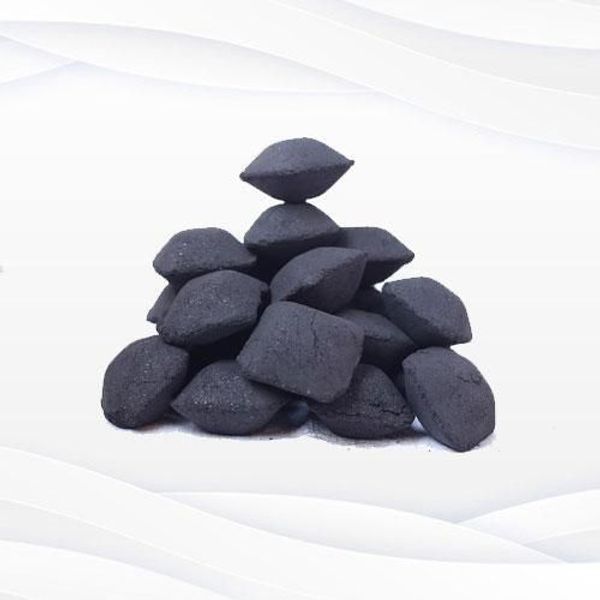
Coconut Shell Charcoal
Coconut shell charcoal is a premium, 100% natural, and eco-friendly product derived from the shells of mature coconuts. Produced through a carbonization process that involves controlled burning, the charcoal is known for its high fixed carbon content, low ash, and excellent calorific value. It is a sustainable alternative to traditional wood charcoal, as it repurposes a common agricultural byproduct.
Product features and specifications:
Export-grade coconut shell charcoal from India meets stringent quality standards, including those recommended by the Asian and Pacific Coconut Community (APCC).
Quality standards (example) :
Moisture: Less than 10%
Ash content: Not more than 2%
Volatile matter: Not more than 15%
Fixed carbon: Not more than 75%
Foreign matter: Not more than 0.5%
Color: Uniformly black
Size: Can be produced in custom sizes, with not more than 5% passing a 0.63 cm mesh sieve
Key characteristics:
High fixed carbon: Ensures a long, sustained burn time and high heat output.
Low ash content: Minimizes residue and provides a clean burn.
Smokeless and odorless: Ideal for applications that require a clean burn, such as barbecuing, grilling, and shisha.
Eco-friendly and sustainable: Produced from a renewable resource without cutting down trees.
Physical properties: High-quality charcoal is uniformly dark and produces a clean, shiny fracture when broken.
Product forms:
We offer coconut shell charcoal in several forms to suit different industrial needs:
Raw charcoal lumps: Available in various sizes, with an irregular shape.
Granulated charcoal: Raw lumps are pulverized and sized into granules for specific applications like activated carbon production.
Charcoal briquettes: Made from compressed shell charcoal powder, often with a food-grade binder. These can be molded into different shapes, such as cubes, pillows, or hexagons, for a consistent and uniform burn.
Applications:
The versatility of coconut shell charcoal makes it a valuable commodity with strong international demand.
Production of activated carbon: This is the most significant commercial application. Coconut shell charcoal is considered a superior raw material due to its small macro-pore structure, which is effective for absorbing gases, vapors, and removing color and odor. Activated carbon is used in water and air purification systems, and the chemical and gold mining industries.
Fuel: Used as an industrial fuel and as a clean, long-lasting fuel for barbecues, grills, and shisha.
Metalwork: Used by goldsmiths and blacksmiths for melting metals.
Cosmetics: Charcoal powder can be used in some beauty applications.
Packaging and logistics:
For export, coconut shell charcoal can be packaged and shipped according to customer requirements.
Packaging: Standard packaging options include durable PP woven bags, often weighing 20, 25, or 50 kg. Packaging can also be customized with specific branding.
Shipping: Charcoal is shipped in containers. A 40-foot container can hold around 24 to 26 metric tons of briquettes
Product features and specifications:
Export-grade coconut shell charcoal from India meets stringent quality standards, including those recommended by the Asian and Pacific Coconut Community (APCC).
Quality standards (example) :
Moisture: Less than 10%
Ash content: Not more than 2%
Volatile matter: Not more than 15%
Fixed carbon: Not more than 75%
Foreign matter: Not more than 0.5%
Color: Uniformly black
Size: Can be produced in custom sizes, with not more than 5% passing a 0.63 cm mesh sieve
Key characteristics:
High fixed carbon: Ensures a long, sustained burn time and high heat output.
Low ash content: Minimizes residue and provides a clean burn.
Smokeless and odorless: Ideal for applications that require a clean burn, such as barbecuing, grilling, and shisha.
Eco-friendly and sustainable: Produced from a renewable resource without cutting down trees.
Physical properties: High-quality charcoal is uniformly dark and produces a clean, shiny fracture when broken.
Product forms:
We offer coconut shell charcoal in several forms to suit different industrial needs:
Raw charcoal lumps: Available in various sizes, with an irregular shape.
Granulated charcoal: Raw lumps are pulverized and sized into granules for specific applications like activated carbon production.
Charcoal briquettes: Made from compressed shell charcoal powder, often with a food-grade binder. These can be molded into different shapes, such as cubes, pillows, or hexagons, for a consistent and uniform burn.
Applications:
The versatility of coconut shell charcoal makes it a valuable commodity with strong international demand.
Production of activated carbon: This is the most significant commercial application. Coconut shell charcoal is considered a superior raw material due to its small macro-pore structure, which is effective for absorbing gases, vapors, and removing color and odor. Activated carbon is used in water and air purification systems, and the chemical and gold mining industries.
Fuel: Used as an industrial fuel and as a clean, long-lasting fuel for barbecues, grills, and shisha.
Metalwork: Used by goldsmiths and blacksmiths for melting metals.
Cosmetics: Charcoal powder can be used in some beauty applications.
Packaging and logistics:
For export, coconut shell charcoal can be packaged and shipped according to customer requirements.
Packaging: Standard packaging options include durable PP woven bags, often weighing 20, 25, or 50 kg. Packaging can also be customized with specific branding.
Shipping: Charcoal is shipped in containers. A 40-foot container can hold around 24 to 26 metric tons of briquettes
Black
껍질
Organic
PP Bags
Origin
인도
+ 2

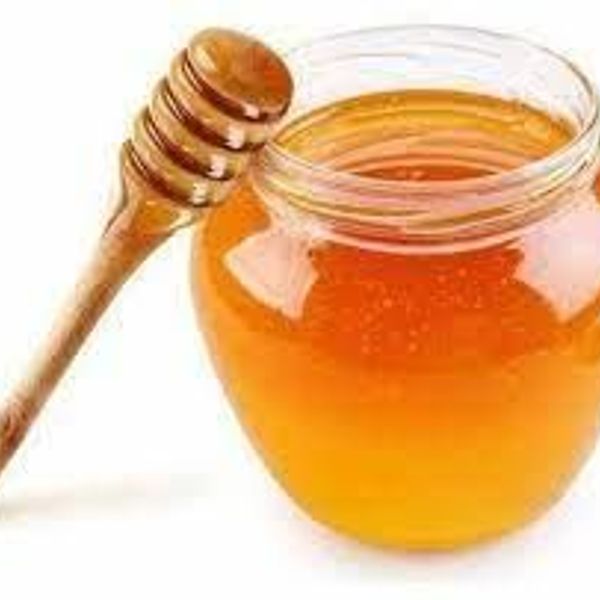
BEE HONEY (100% Natural Pure Forest Honey)
We are proud to provide the greatest honey in Kerala (India), which comes straight from the beautiful forests and wildflower-rich valleys. Crafted sustainably by generations of local beekeepers who know how to preserve the raw goodness of honey.
We offer several honey varieties, including Wild Forest Honey, collected from diverse wildflowers in forests, and
Cheruthen
(Stingless Bee Honey),
known for its distinct flavor from stingless bees. Multifloral Honey is another type, featuring a light, floral taste from various floral sources. Other specific types, such as Wayanadan Honey (a type of wild forest honey from the Wayanad region)
Varieties of Honey in Kerala:
Wild Forest Honey:
This honey is sourced from wild bee hives in Kerala's dense forests, particularly the Western Ghats. It's known for its robust flavor, dark color, rich nutrients, and potential health benefits from the diverse medicinal plants and wildflowers it comes from.
Cheruthen (Stingless Bee Honey):
This unique honey is produced by stingless bees and is a prized specialty. It has a distinct, often tangy taste and a creamy texture, different from honey produced by common honeybees.
Multifloral Honey:
A blend of nectar from various flowering plants, this honey provides a delicate and floral flavor experience.
Wayanadan Honey:
A specific type of wild forest honey collected from the Wayanad region, characterized by its purity and medicinal properties.
Specialty Honeys:
Depending on local flora and beekeepers, you may also find other single-flower or regional honeys like neem, eucalyptus, or sidr honey.
We offer several honey varieties, including Wild Forest Honey, collected from diverse wildflowers in forests, and
Cheruthen
(Stingless Bee Honey),
known for its distinct flavor from stingless bees. Multifloral Honey is another type, featuring a light, floral taste from various floral sources. Other specific types, such as Wayanadan Honey (a type of wild forest honey from the Wayanad region)
Varieties of Honey in Kerala:
Wild Forest Honey:
This honey is sourced from wild bee hives in Kerala's dense forests, particularly the Western Ghats. It's known for its robust flavor, dark color, rich nutrients, and potential health benefits from the diverse medicinal plants and wildflowers it comes from.
Cheruthen (Stingless Bee Honey):
This unique honey is produced by stingless bees and is a prized specialty. It has a distinct, often tangy taste and a creamy texture, different from honey produced by common honeybees.
Multifloral Honey:
A blend of nectar from various flowering plants, this honey provides a delicate and floral flavor experience.
Wayanadan Honey:
A specific type of wild forest honey collected from the Wayanad region, characterized by its purity and medicinal properties.
Specialty Honeys:
Depending on local flora and beekeepers, you may also find other single-flower or regional honeys like neem, eucalyptus, or sidr honey.
Original
Extraction
Good Quality
Amber
Multifloral
+ 6

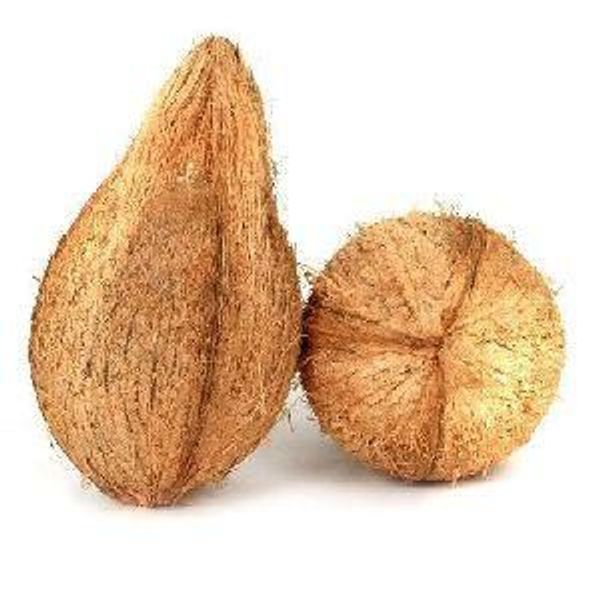
Semi Husked Coconut
Semi-husked coconuts are mature coconuts with a portion of the fibrous outer husk removed, exposing the hard brown shell while still retaining some protective husk around the "eyes" (germination pores).
Coconuts are celebrated for their exceptional sweetness and rich flavor. Grown in the fertile lands in Kerala and Tamil Nadu. They are known for their high quality and unique taste. These coconuts boast tender and juicy flesh with a generous amount of sweet, refreshing water. They are a nutritional powerhouse, rich in vitamins, minerals, and antioxidants.
Quality and features
Appearance: Round or oval shape with a hard, intact brown shell and remaining fibrous husk, typically brown or light brown depending on the variety.
Kernel: Inside, the white coconut meat is firm, thick, and rich in natural oils, suitable for consumption and various culinary uses.
Coconut Water: Semi-husked coconuts retain the clear, refreshing coconut water inside.
Maturity: Fully matured (11-12 months).
Weight: Export quality (Grade A) typically ranges from 500g to 650g per nut, while other grades may be slightly lighter or heavier.
Shelf Life: Semi-husked coconuts have an extended shelf life compared to fully husked varieties due to the partial husk protection, typically 30-45 days under fresh conditions and up to 60 days in cold storage (10-15°C).
Quality Standards: Free from cracks, fungal growth, pest infestations, off-odors, and artificial treatments or coatings.
Benefits for importers
Easier Handling and Transport: Reduced weight and volume make them more convenient and cost-effective to ship compared to fully husked coconuts.
Extended Shelf Life: Partial husking protects the nut during transit and storage, minimizing spoilage and ensuring longer freshness.
Versatility: Can be used for extracting coconut water and milk, culinary uses (cooking, baking), desiccated coconut production, and oil extraction.
Natural Goodness: Retain the natural taste and nutritional benefits of fresh coconuts, including hydration properties and healthy fats (MCTs).
Packaging and loading
Common Packaging: PP woven sacks or mesh bags, typically containing 25-30 nuts per bag.
Container Load: Approximately 10,000-11,000 coconuts in a 20ft container and 22,000-24,000 in a 40ft container.
Coconuts are celebrated for their exceptional sweetness and rich flavor. Grown in the fertile lands in Kerala and Tamil Nadu. They are known for their high quality and unique taste. These coconuts boast tender and juicy flesh with a generous amount of sweet, refreshing water. They are a nutritional powerhouse, rich in vitamins, minerals, and antioxidants.
Quality and features
Appearance: Round or oval shape with a hard, intact brown shell and remaining fibrous husk, typically brown or light brown depending on the variety.
Kernel: Inside, the white coconut meat is firm, thick, and rich in natural oils, suitable for consumption and various culinary uses.
Coconut Water: Semi-husked coconuts retain the clear, refreshing coconut water inside.
Maturity: Fully matured (11-12 months).
Weight: Export quality (Grade A) typically ranges from 500g to 650g per nut, while other grades may be slightly lighter or heavier.
Shelf Life: Semi-husked coconuts have an extended shelf life compared to fully husked varieties due to the partial husk protection, typically 30-45 days under fresh conditions and up to 60 days in cold storage (10-15°C).
Quality Standards: Free from cracks, fungal growth, pest infestations, off-odors, and artificial treatments or coatings.
Benefits for importers
Easier Handling and Transport: Reduced weight and volume make them more convenient and cost-effective to ship compared to fully husked coconuts.
Extended Shelf Life: Partial husking protects the nut during transit and storage, minimizing spoilage and ensuring longer freshness.
Versatility: Can be used for extracting coconut water and milk, culinary uses (cooking, baking), desiccated coconut production, and oil extraction.
Natural Goodness: Retain the natural taste and nutritional benefits of fresh coconuts, including hydration properties and healthy fats (MCTs).
Packaging and loading
Common Packaging: PP woven sacks or mesh bags, typically containing 25-30 nuts per bag.
Container Load: Approximately 10,000-11,000 coconuts in a 20ft container and 22,000-24,000 in a 40ft container.
Sweet Young Coconut
6.75-12.6 Kg
약간 흰색, Brown, White
일반 품질, Good Quality, Grade A
Raw
+ 5

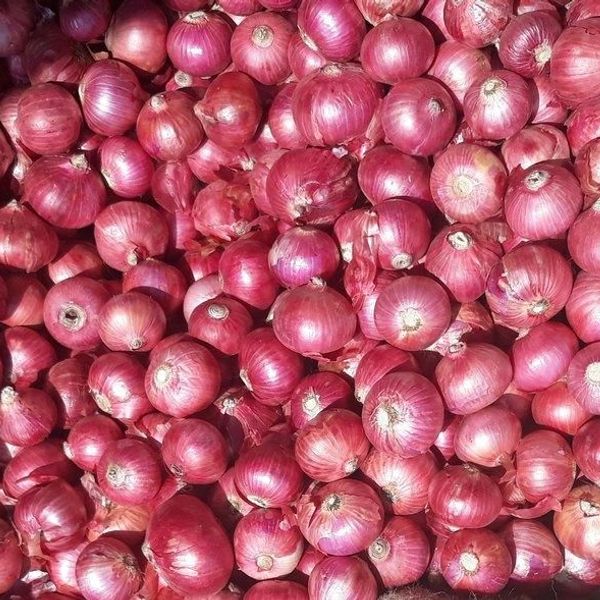
Red Onions
Nashik onions well known all over the world for their unique sweetness, crisp texture, and reliable quality. The onions are sourced from the farmers of Nashik, India, which is one of the country's largest onion-producing regions.
Lasalgaon, near Nashik, is Asia's largest onion market and a crucial center for India's onion trade.
Approximately 1/2 million tonnes of onions are handled annually in the region's market.
Nashik's onions are known for their strong flavor and extended shelf life, making them suitable for export and long-distance transportation.
Nashik exports onions both domestically and internationally, with destinations like Bangladesh, Malaysia, the United Arab Emirates, Sri Lanka, and Nepal being major importers of Indian onions.
The onion market in Nashik is a significant contributor to the city's economy.
The Lasalgaon onion market rate serves as a benchmark, influencing onion prices across the Asian market.
Lasalgaon, near Nashik, is Asia's largest onion market and a crucial center for India's onion trade.
Approximately 1/2 million tonnes of onions are handled annually in the region's market.
Nashik's onions are known for their strong flavor and extended shelf life, making them suitable for export and long-distance transportation.
Nashik exports onions both domestically and internationally, with destinations like Bangladesh, Malaysia, the United Arab Emirates, Sri Lanka, and Nepal being major importers of Indian onions.
The onion market in Nashik is a significant contributor to the city's economy.
The Lasalgaon onion market rate serves as a benchmark, influencing onion prices across the Asian market.
Excellent Quality
Fresh
Organic
Chopped, Minced
Mesh Bags
+ 3

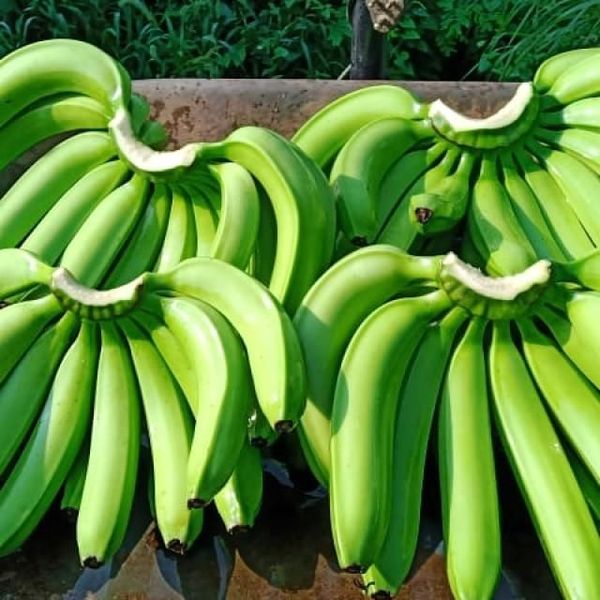
G9 Cavendish Banana
Indian Cavendish bananas, particularly the
G9 variety
, are a popular export choice due to their quality and versatility. They are known for their firm texture, slightly tangy taste when unripe, and sweet flavor when ripe. These bananas are a good source of potassium, fiber, and vitamins B6 and C, making them a healthy and delicious addition to any diet. They are ideal for fresh consumption, cooking, and baking, with applications ranging from frying and boiling to being a key ingredient in desserts.
Grade:
'A' Grade Export Quality.
Maturity:
40-46 (dependent on age, size, and length).
Length:
16 cm to 25 cm (pulp to tip).
Hands per bunch:
4, 5, or 6 hands (with 7 hands as a minor percentage).
Net Weight per Box:
13 kg.
Gross Weight per Box:
14 kg (approximate).
Type of Packing:
13 kg in premium boxes.
Load-ability in 40ft Reefer Container:
1540 boxes (equivalent to 20 MT).
Mode of Stuffing:
Non-palletized.
Temperature:
13.5 degrees Celsius in reefer containers.
Port of Loading:
JNPT Port, Mumbai.
Origin:
Solapur, Jalgaon (India).
Incoterms:
FOB or CIF.
Delivery Time:
7 days from date of order placed.
Certifications:
APEDA, Phytosanitary certificate (and others as per buyer request).
G9 variety
, are a popular export choice due to their quality and versatility. They are known for their firm texture, slightly tangy taste when unripe, and sweet flavor when ripe. These bananas are a good source of potassium, fiber, and vitamins B6 and C, making them a healthy and delicious addition to any diet. They are ideal for fresh consumption, cooking, and baking, with applications ranging from frying and boiling to being a key ingredient in desserts.
Grade:
'A' Grade Export Quality.
Maturity:
40-46 (dependent on age, size, and length).
Length:
16 cm to 25 cm (pulp to tip).
Hands per bunch:
4, 5, or 6 hands (with 7 hands as a minor percentage).
Net Weight per Box:
13 kg.
Gross Weight per Box:
14 kg (approximate).
Type of Packing:
13 kg in premium boxes.
Load-ability in 40ft Reefer Container:
1540 boxes (equivalent to 20 MT).
Mode of Stuffing:
Non-palletized.
Temperature:
13.5 degrees Celsius in reefer containers.
Port of Loading:
JNPT Port, Mumbai.
Origin:
Solapur, Jalgaon (India).
Incoterms:
FOB or CIF.
Delivery Time:
7 days from date of order placed.
Certifications:
APEDA, Phytosanitary certificate (and others as per buyer request).
설익음, Long
자이언트 캐번디시, Cavendish Banana - Basrai, Small Banana Varieties - Yelakki, 캐번디시 바나나 - 드워프 캐번디시, 캐번디시 바나나 - 윌리엄스, 캐번디시 바나나
18 - 25cm
씨 없음
Yellow - Ripe, Yellow, Green
+ 7

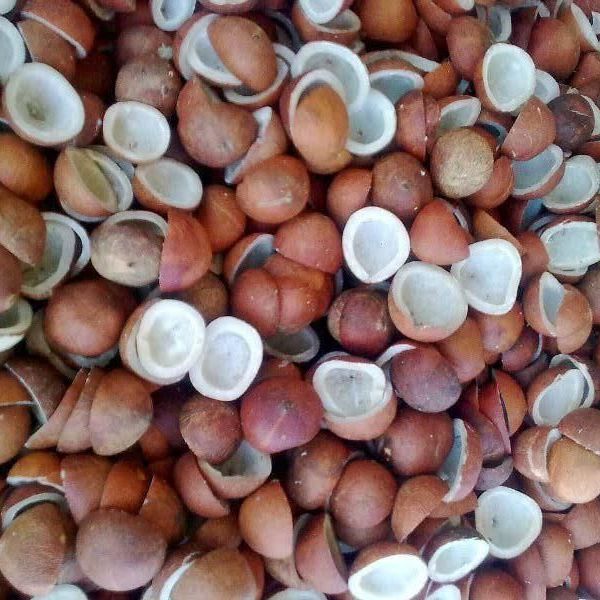
Dry Coconut (Copra)
Dry coconut, also known as copra, is the dried meat of a mature coconut. It's a versatile ingredient used in various cuisines for its rich, sweet, and nutty flavor, as well as its nutritional benefits. Copra is a good source of healthy fats, fiber, and minerals like iron and potassium. It's also a key ingredient in coconut oil production.
Detailed description:
Drying Process:
Copra is made by drying the meat of mature coconuts, typically through sun-drying or kiln-drying.
Nutritional Value:
Copra is rich in healthy fats, including including medium-chain triglycerides (MCTs), which are easily metabolized for energy. It also provides dietary fiber, iron, and potassium.
Culinary Uses:
Copra is used in a variety of dishes, including curries, sweets, and desserts. It can be grated, ground, or used as a topping.
Oil Extraction:
A significant amount of coconut oil is extracted from copra.
Other Uses:
Copra is also used in traditional medicine and as a snack.
Types:
There are different types of copra, including "ball copra," which is dried whole within the coconut shell.
Shelf Life:
Copra is known for its relatively long shelf life due to its low moisture content.
Appearance and characteristics:
Color: It typically has a brownish outer layer with a white to off-white inner kernel.
Texture: The dried meat is firm and can range from smooth to slightly rough.
Form: Copra can be available as chunks, cups, or whole balls, depending on the processing and intended use.
Aroma: It has a distinct, slightly sweet coconut aroma, which can be more concentrated due to the drying process.
Oil Content: Dry copra is rich in oil, typically containing around 60-70% oil.
Uses:
Coconut oil extraction: This is the primary use of copra. The oil is used in cooking, cosmetics, and various industrial applications.
Food applications: It can be used in various culinary applications, including desserts, curries, and snacks. In India, it's used in dishes like Copra Pak, chutneys, and ladoos.
Animal feed: The de-oiled residue (copra cake or meal) after oil extraction is used as a nutritious feed for livestock.
Religious purposes: Ball copra holds significant religious importance in some Indian traditions and is used in pooja rituals and as offerings.
Types and grades:
Ball Copra: Whole, dried coconut kernels dried within the shell, forming a ball-like shape. Often consumed as a snack and used in religious rituals.
Milling/Edible Copra: Dried coconut meat extracted from the shell, often in pieces or cups. Primarily used for oil extraction. Edible copra is of higher quality and can also be consumed directly or used in food preparations.
Grades: Copra is graded based on factors like moisture content, oil content, color, and impurities, with different grades suited for different uses.
Nutritional value:
Copra is rich in healthy fats, particularly medium-chain fatty acids (MCFAs), which are easily digestible and provide a quick source of energy.
It is a good source of dietary fiber, vitamins (like B vitamins and vitamin C), and minerals (including iron, magnesium, phosphorus, and potassium).
Copra and its oil are associated with various health benefits, including supporting heart health, aiding digestion, boosting immunity, and potentially aiding brain function.
In essence, dry coconut or copra is a versatile product derived from coconuts through a drying process, valued for its oil content, nutritional benefits, culinary applications, and role in various industries and cultural practices.
Detailed description:
Drying Process:
Copra is made by drying the meat of mature coconuts, typically through sun-drying or kiln-drying.
Nutritional Value:
Copra is rich in healthy fats, including including medium-chain triglycerides (MCTs), which are easily metabolized for energy. It also provides dietary fiber, iron, and potassium.
Culinary Uses:
Copra is used in a variety of dishes, including curries, sweets, and desserts. It can be grated, ground, or used as a topping.
Oil Extraction:
A significant amount of coconut oil is extracted from copra.
Other Uses:
Copra is also used in traditional medicine and as a snack.
Types:
There are different types of copra, including "ball copra," which is dried whole within the coconut shell.
Shelf Life:
Copra is known for its relatively long shelf life due to its low moisture content.
Appearance and characteristics:
Color: It typically has a brownish outer layer with a white to off-white inner kernel.
Texture: The dried meat is firm and can range from smooth to slightly rough.
Form: Copra can be available as chunks, cups, or whole balls, depending on the processing and intended use.
Aroma: It has a distinct, slightly sweet coconut aroma, which can be more concentrated due to the drying process.
Oil Content: Dry copra is rich in oil, typically containing around 60-70% oil.
Uses:
Coconut oil extraction: This is the primary use of copra. The oil is used in cooking, cosmetics, and various industrial applications.
Food applications: It can be used in various culinary applications, including desserts, curries, and snacks. In India, it's used in dishes like Copra Pak, chutneys, and ladoos.
Animal feed: The de-oiled residue (copra cake or meal) after oil extraction is used as a nutritious feed for livestock.
Religious purposes: Ball copra holds significant religious importance in some Indian traditions and is used in pooja rituals and as offerings.
Types and grades:
Ball Copra: Whole, dried coconut kernels dried within the shell, forming a ball-like shape. Often consumed as a snack and used in religious rituals.
Milling/Edible Copra: Dried coconut meat extracted from the shell, often in pieces or cups. Primarily used for oil extraction. Edible copra is of higher quality and can also be consumed directly or used in food preparations.
Grades: Copra is graded based on factors like moisture content, oil content, color, and impurities, with different grades suited for different uses.
Nutritional value:
Copra is rich in healthy fats, particularly medium-chain fatty acids (MCFAs), which are easily digestible and provide a quick source of energy.
It is a good source of dietary fiber, vitamins (like B vitamins and vitamin C), and minerals (including iron, magnesium, phosphorus, and potassium).
Copra and its oil are associated with various health benefits, including supporting heart health, aiding digestion, boosting immunity, and potentially aiding brain function.
In essence, dry coconut or copra is a versatile product derived from coconuts through a drying process, valued for its oil content, nutritional benefits, culinary applications, and role in various industries and cultural practices.
Mixed
알맹이(견과류)
Origin
인도
Production Capacity
30 /
Export Volume
1 /

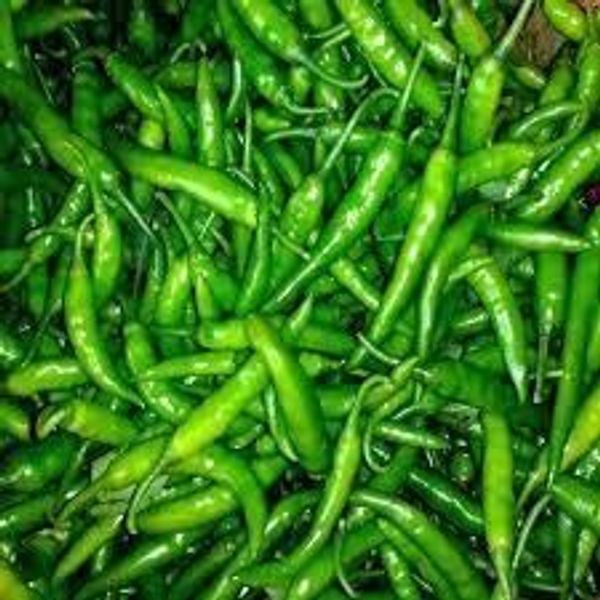
G4 Green Chilli
The G4 Green Chilli, is a high-demand chili pepper variety from India, particularly popular in international markets like the Middle East, Europe, and Asia due to its consistent quality and versatility.
Its key features are:
Appearance: Elongated, dark green, firm, and glossy skin, typically measuring 2.5 to 3.5 cm in length. Some sources indicate a length range of 3-6 inches.
Pungency: Offers a high level of spiciness, making it ideal for adding heat to various cuisines. Some sources describe the pungency as moderate to high.
Flavor Profile: Known for its pungent and slightly tangy taste, enhancing dishes with a distinctive flavor and aroma.
Shelf Life: Under proper storage conditions, it boasts an excellent shelf life of approximately 15 to 25 days.
Nutritional Value: Rich in vitamins A and C, capsaicin, and antioxidants, contributing to overall health and well-being.
Cultivation: Often grown organically and using good agricultural practices (GAP), ensuring high quality and adherence to international food safety standards.
Packaging: Typically packed in sturdy, ventilated, food-grade corrugated fiberboard boxes (e.g., 5-ply or 3-ply) designed for optimal space utilization and protection during long-distance transport.
Export Markets: Highly sought after in countries in the Middle East, Europe, and Asia, where it's used in fresh produce retail, food processing, and ethnic cuisine industries.
Its key features are:
Appearance: Elongated, dark green, firm, and glossy skin, typically measuring 2.5 to 3.5 cm in length. Some sources indicate a length range of 3-6 inches.
Pungency: Offers a high level of spiciness, making it ideal for adding heat to various cuisines. Some sources describe the pungency as moderate to high.
Flavor Profile: Known for its pungent and slightly tangy taste, enhancing dishes with a distinctive flavor and aroma.
Shelf Life: Under proper storage conditions, it boasts an excellent shelf life of approximately 15 to 25 days.
Nutritional Value: Rich in vitamins A and C, capsaicin, and antioxidants, contributing to overall health and well-being.
Cultivation: Often grown organically and using good agricultural practices (GAP), ensuring high quality and adherence to international food safety standards.
Packaging: Typically packed in sturdy, ventilated, food-grade corrugated fiberboard boxes (e.g., 5-ply or 3-ply) designed for optimal space utilization and protection during long-distance transport.
Export Markets: Highly sought after in countries in the Middle East, Europe, and Asia, where it's used in fresh produce retail, food processing, and ethnic cuisine industries.
Excellent Quality
Green
Fresh
Organic
Long
+ 4

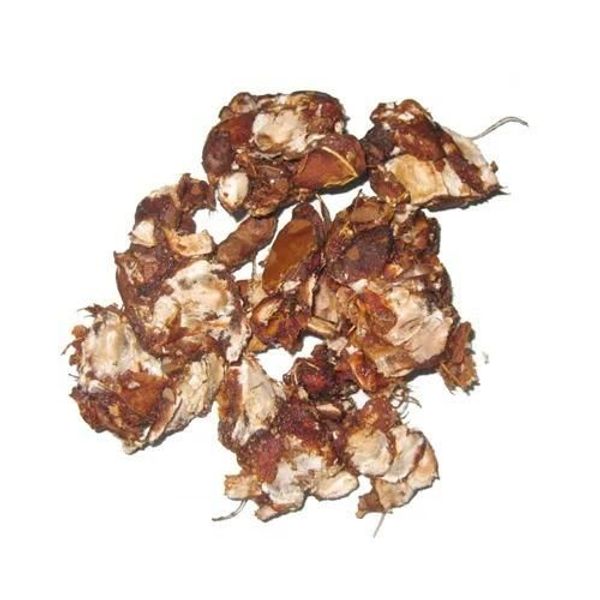
Dried Seedless Tamarind
Dried seedless tamarind is the fruit pulp of the tamarind tree (
Tamarindus indica
) that has been processed to remove the seeds and dried to concentrate its flavor and extend its shelf life. This tropical fruit, native to Africa, is prized for its unique sweet and sour taste and is widely used in various cuisines around the world.
Culinary uses:
Souring agent: It adds a tangy and authentic flavor to dishes, especially in South Indian and Gujarati lentil dishes, curries, and chutneys according to Kerala Naturals.
Chutneys and sauces: It's a key ingredient in many chutneys and sauces, adding a sweet and tangy element.
Marinades and glazes: The tangy flavor complements meats, tofu, and vegetables, making it ideal for marinades and glazes.
Beverages: It's used in traditional drinks like "agua de tamarindo" in Mexico and Central America.
Snacks and desserts: The unique flavor lends itself well to candies, desserts, and can be enjoyed as a healthy snack on its own.
Nutritional value:
Dried seedless tamarind is a rich source of vitamins and minerals, including vitamin C, B vitamins, iron, potassium, and magnesium.
It is also a good source of dietary fiber and antioxidants. A single cup (120 grams) of the pulp contains a significant portion of the daily value for magnesium, potassium, iron, and various B vitamins.
Health benefits:
Dried seedless tamarind may offer several health benefits due to its nutritional content. It can support digestive health, potentially contributing to regularity and relief from constipation. Its fiber, potassium, and antioxidants may benefit heart health by potentially lowering cholesterol and blood pressure. The fruit also contains compounds with anti-inflammatory and antioxidant properties. While further research is needed, studies have explored its potential in other areas such as anticancer, liver-protective, antimicrobial, and anti-diabetic effects
Tamarindus indica
) that has been processed to remove the seeds and dried to concentrate its flavor and extend its shelf life. This tropical fruit, native to Africa, is prized for its unique sweet and sour taste and is widely used in various cuisines around the world.
Culinary uses:
Souring agent: It adds a tangy and authentic flavor to dishes, especially in South Indian and Gujarati lentil dishes, curries, and chutneys according to Kerala Naturals.
Chutneys and sauces: It's a key ingredient in many chutneys and sauces, adding a sweet and tangy element.
Marinades and glazes: The tangy flavor complements meats, tofu, and vegetables, making it ideal for marinades and glazes.
Beverages: It's used in traditional drinks like "agua de tamarindo" in Mexico and Central America.
Snacks and desserts: The unique flavor lends itself well to candies, desserts, and can be enjoyed as a healthy snack on its own.
Nutritional value:
Dried seedless tamarind is a rich source of vitamins and minerals, including vitamin C, B vitamins, iron, potassium, and magnesium.
It is also a good source of dietary fiber and antioxidants. A single cup (120 grams) of the pulp contains a significant portion of the daily value for magnesium, potassium, iron, and various B vitamins.
Health benefits:
Dried seedless tamarind may offer several health benefits due to its nutritional content. It can support digestive health, potentially contributing to regularity and relief from constipation. Its fiber, potassium, and antioxidants may benefit heart health by potentially lowering cholesterol and blood pressure. The fruit also contains compounds with anti-inflammatory and antioxidant properties. While further research is needed, studies have explored its potential in other areas such as anticancer, liver-protective, antimicrobial, and anti-diabetic effects
Citron
스트립, 칩
건조
Origin
인도
Production Capacity
20 /
+ 1
Recommended suppliers for you
By clicking “Accept Cookies,” I agree to provide cookies for statistical and personalized preference purposes. To learn more about our cookies, please read our Privacy Policy.
